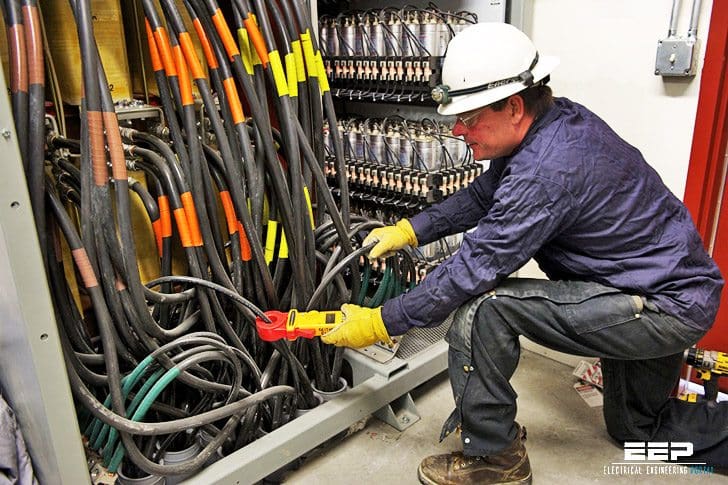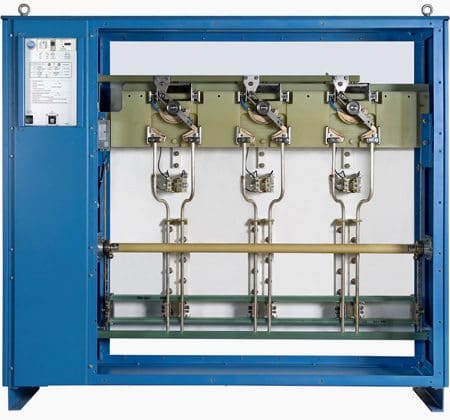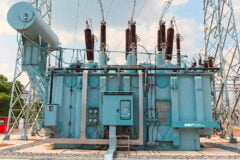Voltage tolerance ranges
Voltage regulation, by definition, is the percentage change in secondary voltage from no-load to full-load conditions. The regulation is customarily specified at a specific power factor, as the power factor of the load affects the voltage regulation of the device or circuit.

Voltage regulation cannot be improved by the use of the conventional no-load tap changer on a transformer. The tap changer merely changes the transformer turns ratio, but does not significantly change the transformer impedance.
The regulation (percent change from no-load to full-load) will, therefore, not change. The operating voltage range will, however, change and affect the performance of the utilization equipment.
Load flow studies should be performed and operating conditions (no-load, light-load, or full-load) examined to ensure that voltage tolerance ranges are not exceeded. If voltage tolerance ranges are exceeded, then one alternative is to adjust transformer taps to compensate for either high voltage, at no-load or light-load conditions, or low voltage, at full-load conditions.
Capacitors of either switched or fixed configurations can also be used to correct the voltage range profile of a distribution system.
Often, for large complex systems, the use of switched capacitors is the only realistic solution for a voltage range that is too wide. In this instance, capacitors are switched off-line when the load is light, so that the voltage does not become too high.
For maximum benefit, capacitors should be located close to the load that is causing the problem, however, this is often not technically or economically feasible.
Synchronous motors can also be used to good advantage on large power systems if the 0.8 power factor design is purchased, rather than the less expensive unity power factor motor. The 0.8 power factor synchronous motor can be used to improve voltage levels on its utilization bus in the same manner as capacitors.
Both devices act as a source of reactive power (VARs) to the system.

Control of the operating voltage range can also be achieved by the use of transformers with on-load tap changers and line regulators.
Both devices use multi-tap devices, in combination with voltage sensing and control apparatus, to adjust the transformer ratio or regulator ratio by actively switching taps as the steady-state load changes. These devices are usually used by utilities in the primary distribution system and provide the final distribution circuits with a voltage range within the Range A limits of ANSI C84.1.
Unless the site distribution system is unusually large and complex, and the daily load fluctuations quite large, these devices are not applied to electrical distribution systems on facilities.
Reference: Electric Power Distribution Systems Operations – Naval Facilities Engineering Command
Copyright Notice
This technical article is protected by U.S. and international copyright laws. Reproduction and distribution of PDF version of this technical article to websites such as Linkedin, Scribd, Facebook and others without written permission of the sponsor is illegal and strictly prohibited.© EEP-Electrical Engineering Portal.
Related electrical guides & articles
Premium Membership
Edvard Csanyi
Hi, I'm an electrical engineer, programmer and founder of EEP - Electrical Engineering Portal. I worked twelve years at Schneider Electric in the position of technical support for low- and medium-voltage projects and the design of busbar trunking systems.I'm highly specialized in the design of LV/MV switchgear and low-voltage, high-power busbar trunking (<6300A) in substations, commercial buildings and industry facilities. I'm also a professional in AutoCAD programming.
Profile: Edvard Csanyi











Wow!!!
It is one of the most useful website for electrical engineer…
Really awesome… :)
Hello Edvard. First i want to thank you for the excellent work with this site.
I’m sending this message to ask your opinion about using reactive power control with the inverters used in solar microgeneration when integrated in a smart grid. The control could be made by one of the methods described on Standard EN50438. For example: the voltage related control mode Q(U) controls the reactive power output as a function of the voltage.
Do you think it’s a viable option for the future and integrated on a smart grid to solve the voltage quality issues that happen principally on rural LV distribution grids?
Sorry for my english it’s not perfect.
Newly joining and seems helpful for electrical engineers..
This is best website concern electric system and knowledge i am very helpful to joint your EE portal.
This is great website and very helpful to enhance and refresh our knowledge.
Thanks and very very helpful.
Excellent